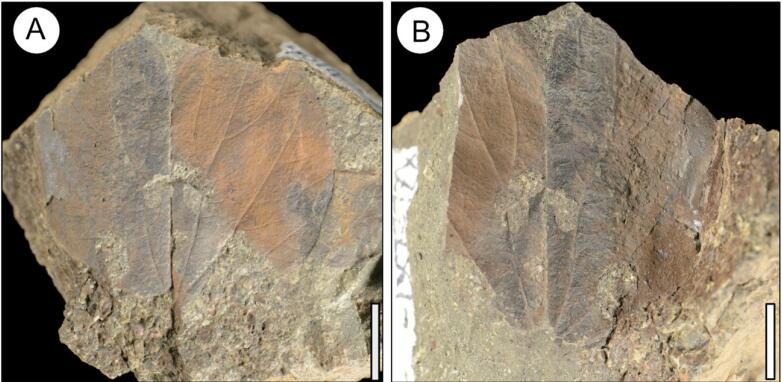Bauhinia is a large and taxonomically complex group in Cercidoideae (a subfamily of the Fabaceae), with nearly 380 living species,
encompassing trees, shrubs, lianas and herbs, mainly distributed in the Pantropical regions. However, its evolutionary and biogeographical history is still unclear due to the scarcity of fossil records.
During their field exploration in the Tibetan Plateau, researchers from Xishuangbanna Tropical Botanical Garden (XTBG) collected fossil leaves of Bauhinia from the upper Paleocene Liuqu Formation, Lazi County, southern Tibet. Following detailed morphological comparison with living and previously reported fossil species, the researchers assigned the leaf fossils as a new species, namely Bauhinia tibetensis.
With the new fossil evidence, the researchers reconstructed the evolutionary and biogeographic histories of Bauhinia. Together with phylogenetic analyses, the results suggest that Bauhinia originated from Africa and spread into what is now the southern Tibetan Plateau by the late Paleocene, after which the Asian clade began to diverge.
With the assignment of 66.0 Ma as the stem node, the divergence age of Bauhinia was in the earliest Paleocene. The analysis showed that Bauhinia tibetensis is from the latest Paleocene (about 56 million years ago) of the southern Tibetan region. Bauhinia tibetensis is the earliest fossil record and a representative of the crown node for Bauhinia.
The oldest fossil record of Bauhinia was published in Journal of Systematic Palaeontology.
Combined with palaeoecological niche simulations and ancestral state reconstruction, the new fossils suggested a Paleocene origin of Bauhinia in the Afrotropical realm that subsequently dispersed to the Neotropical and Indomalayan realms.
“The discovery of the oldest Bauhinia from the southern Tibetan Plateau updates our understanding of the biogeographical history of this genus and demonstrates that the Kohistan-Ladakh Island Arc is an ancient corridor for floristic interchange between Africa and India,” said SU Tao of XTBG.
The study was partly supported by the Second Tibetan Plateau Scientific Expedition program and the National Natural Science Foundation of China.
Contact
SU Tao Ph.D Principal Investigator
Key Laboratory of Tropical Forest Ecology, Xishuangbanna Tropical Botanical Garden, Chinese Academy of Sciences, Mengla, Yunnan 666303, China
E-mail: sutao@xtbg.org.cn
Published: 17 October 2023

Fossil leaves of Bauhinia tibetensis. (Image by GAO Yi)

